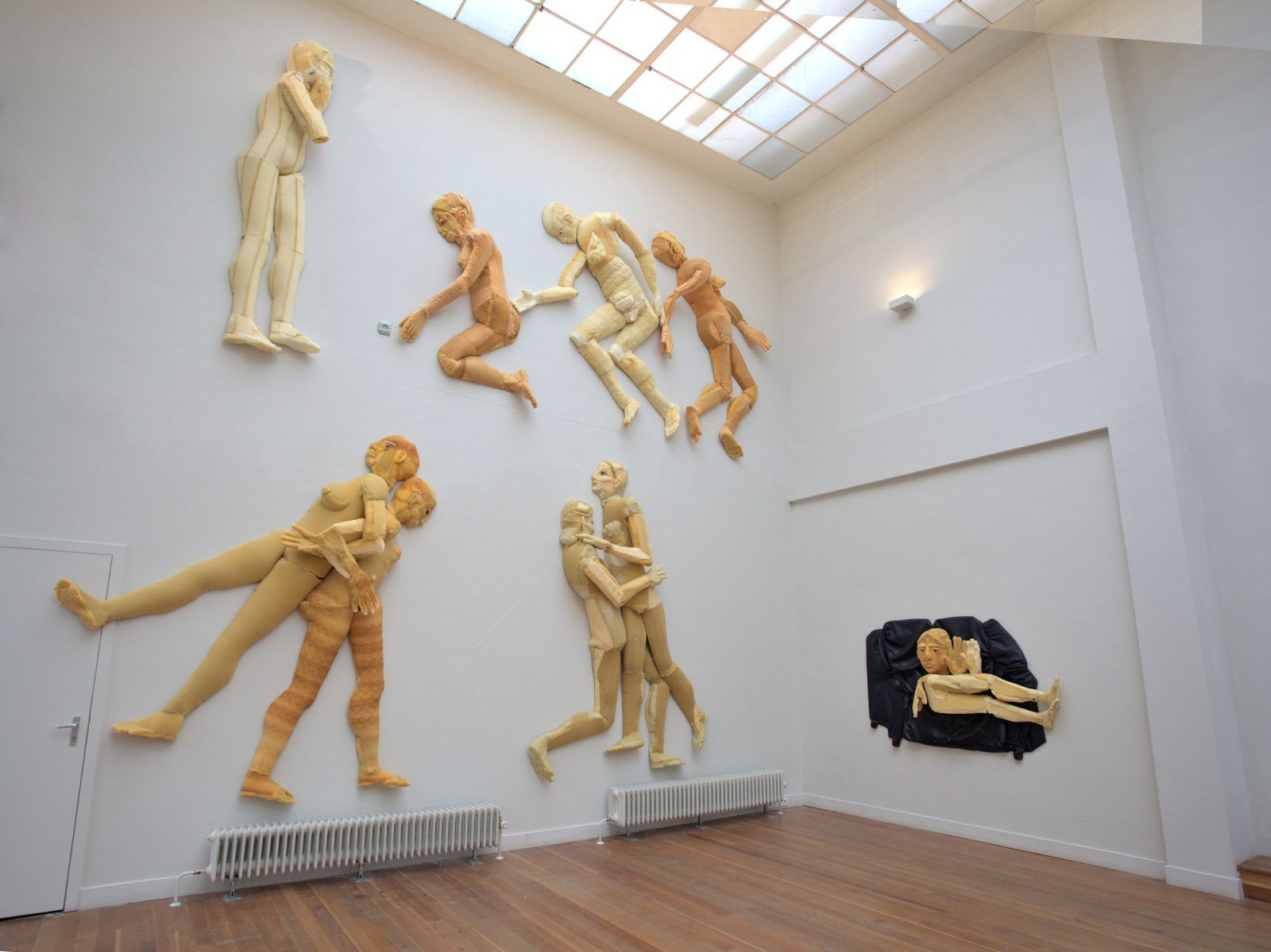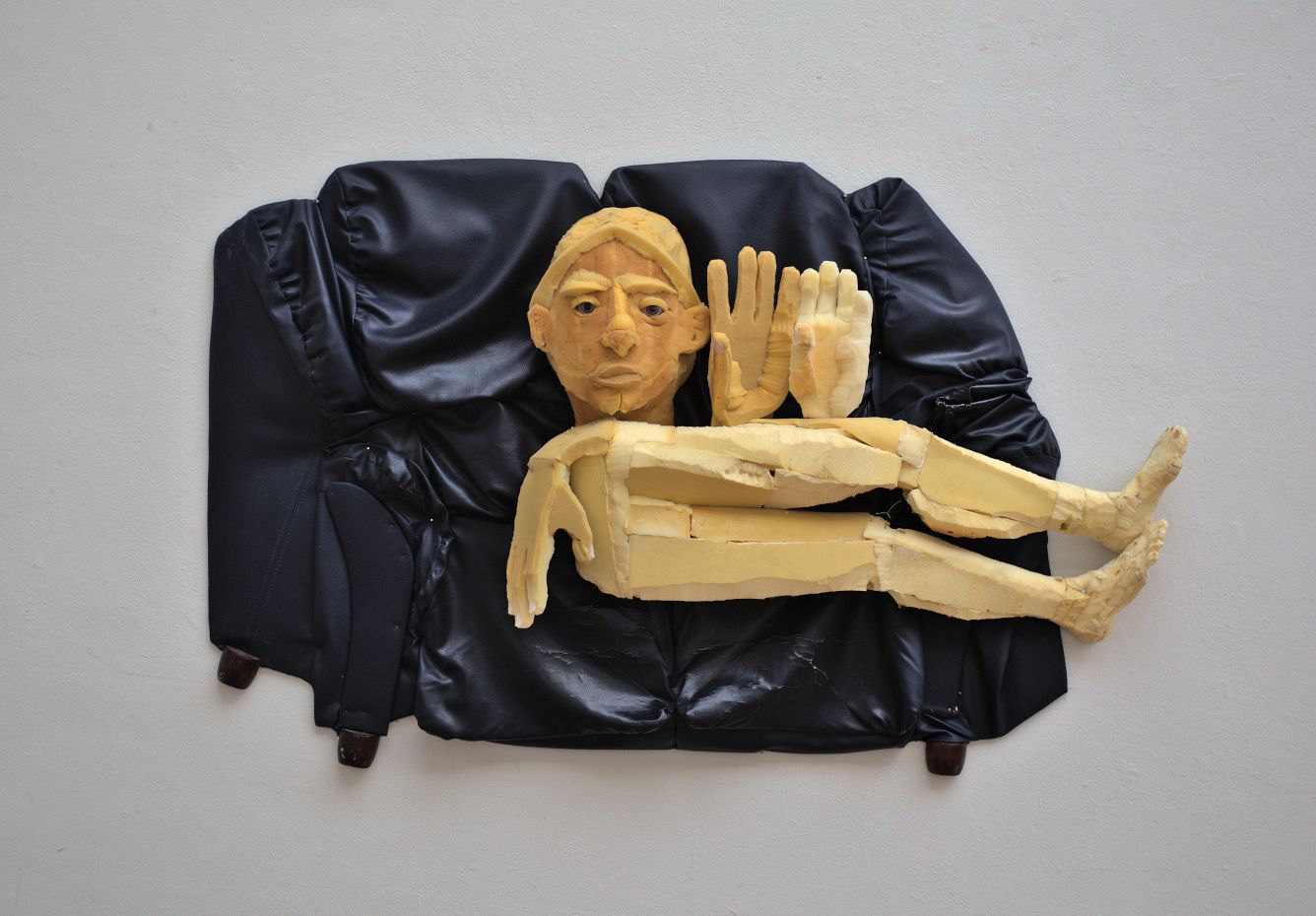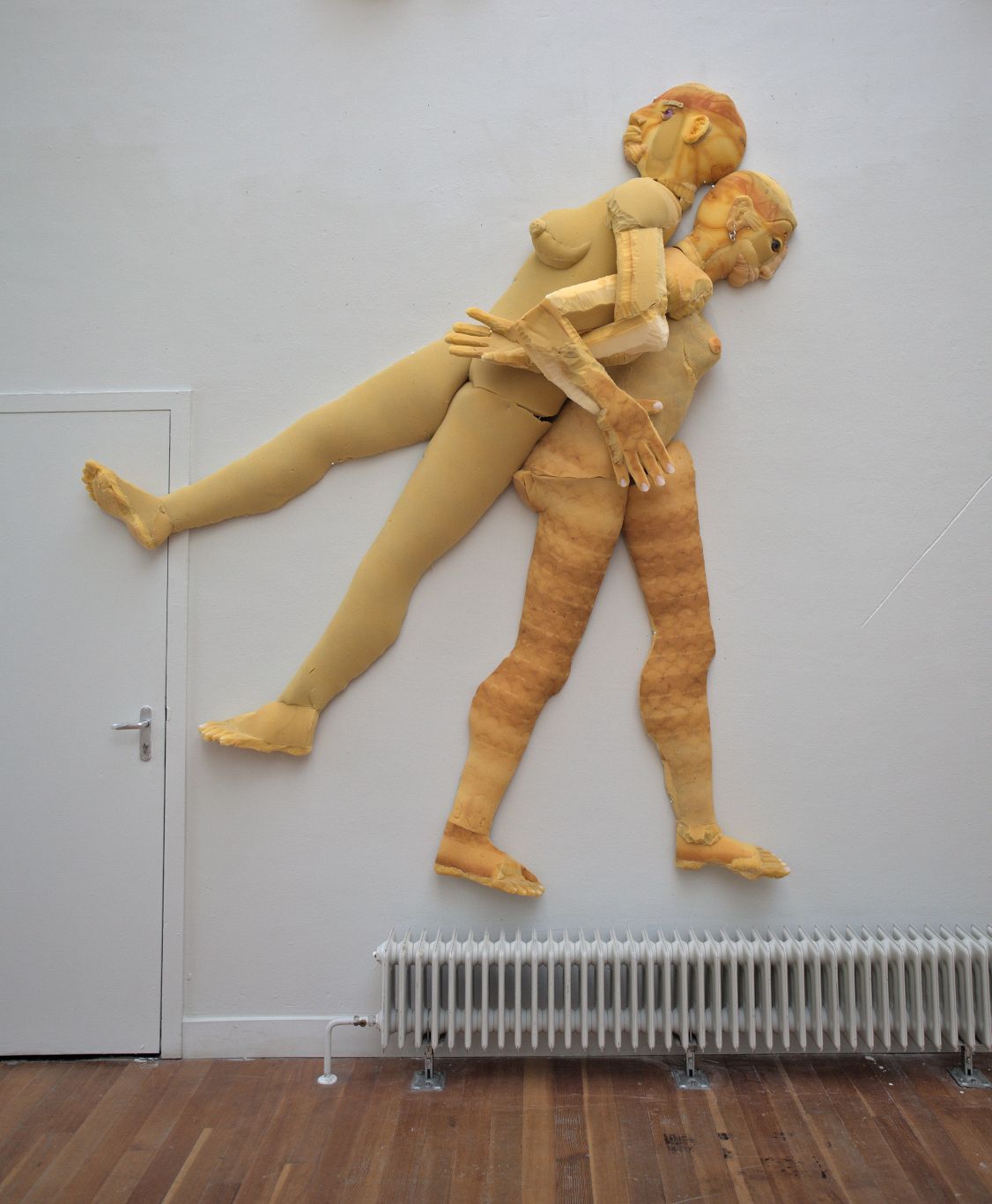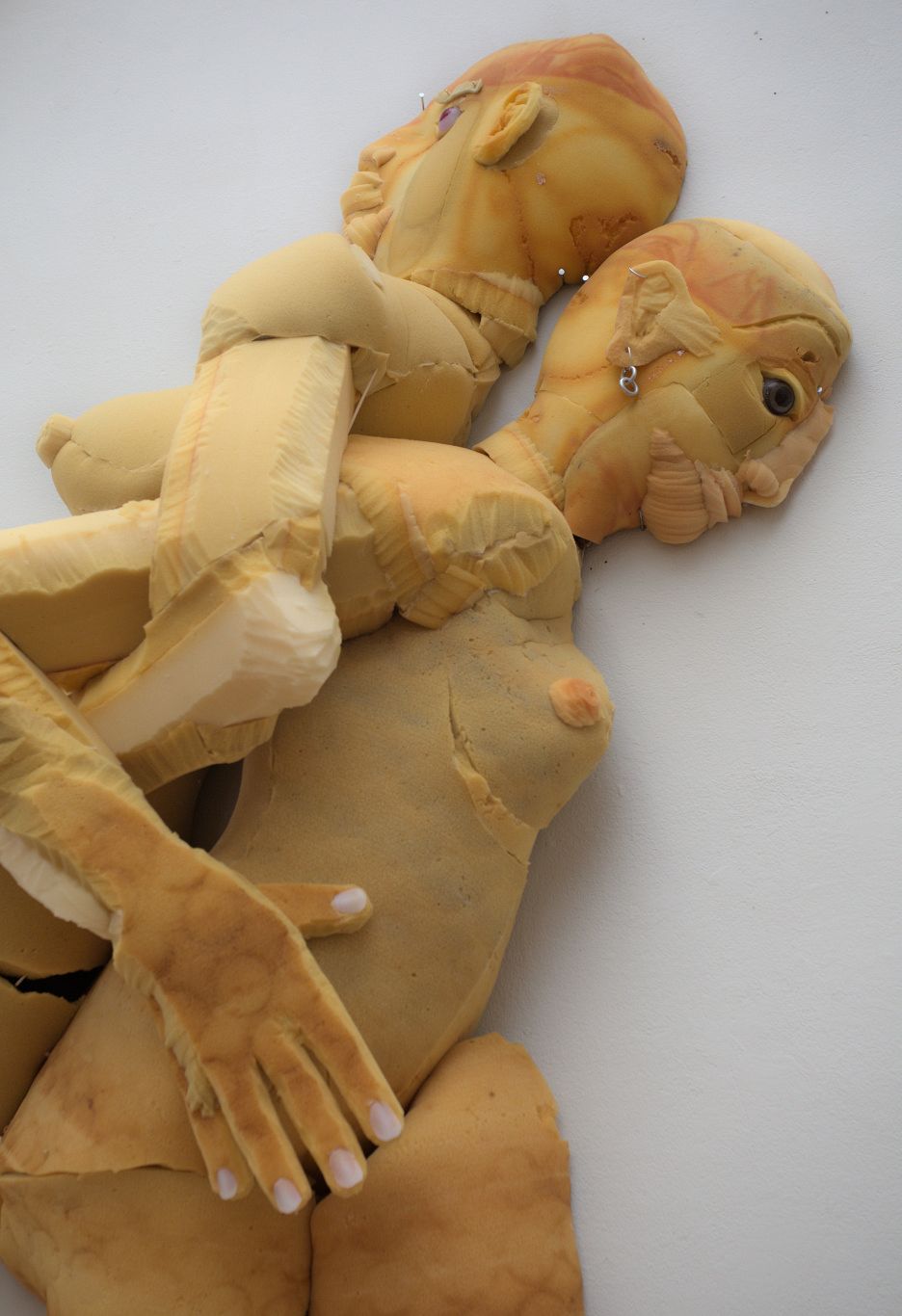
Juliette Hengst
hengstjuliette@gmail.com
www.juliettehengst.com/index.html
www.instagram.com/juliettehengst/?hl=en
Who sat, ate, slept here? Alone or together?
In my neighborhood , in the Hague, we throw our furniture on the street when we want to get rid of it. It will either stay there for some time or in a truck it will disappear the next morning.
3 mattresses and 3 couches, collected from my neighborhood streets and friends, then transformed from intimate and ubiquitous materials into human scenes. I want to bridge our common physical surroundings with our beliefs on what we find dangerous, our ‘taboo’ experiences; our own experiences that we hold, but also those of our loved ones. I am fascinated that our ancestors had the same squabbles and dreams as us, but also had the same violence amongst them, both interpersonally and externally. What makes a danger and how to navigate it seem concrete and decided, but looking closer reveals the opposite.
The scene in the upper half of the work shows a group being electrocuted. First one person is electrocuted by a power source, then someone trying to help them also becomes electrocuted by touch, and so the next one as well. So according to our protocols to help the person you should turn off the source and call for help. I find the whole situation quite mythical.
In the lower half there are two pairs of people carrying each other. Through playing with body language the lower left pair became a back stretch or game, but flipping the figures to face each other made a pose often used to depict rape throughout art history, like Bernini’s Pluto and Persephone.
The body is a stage for empathy, a lens to view experiences, emotions and parts of daily life. I want to engage with the collective body, with collective experiences and the collective experiences of violence. By making these gender ambiguous representations of people I want to ask people to (re)consider their own place in this collective.



